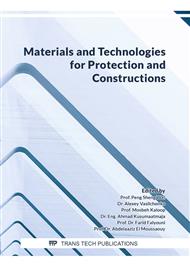p.3
p.12
p.19
p.26
p.33
p.41
p.49
p.55
Effect of Silica Content on the Surface Quality of Cast Iron in Shell Mould Process
Abstract:
Resin Coated Sand (RCS) is an important raw material for the Shell mould process. This research aimed to study the effect of silica content on the surface quality of cast iron in the shell mould process. The four kinds of sand are Australian sand, Rayong sand, Reclaimed sand and River sand. All sand was mixed with phenolic resin for making Resin Coated Sand. The chemical composition of sand was tested by X-Ray Fluorescence. The result found that the SiO2 content of each sand was different. The SiO2 content of Australian sand 99.8%, Rayong sand 98.6%, Reclaimed sand 90.3% and River sand 89.2%. The morphology from the microscope was found that sand grains exhibited different shapes that affect mechanical properties such as bending strength and thermal expansion of Resin Coated Sand. The qualification of Resin Coated Sand is bending strength and thermal expansion from Australian sand is the highest. On the other hand, River sand is the lowest bending strength and thermal expansion. The casting result showed that the burn on and veining defects were found on the casting surface. The veining occurred with Australian sand. While, the burn on occurred with Rayong sand, Reclaimed sand and River sand.
Info:
Periodical:
Pages:
3-11
Citation:
Online since:
July 2022
Authors:
Keywords:
Price:
Сopyright:
© 2022 Trans Tech Publications Ltd. All Rights Reserved
Share:
Citation:



